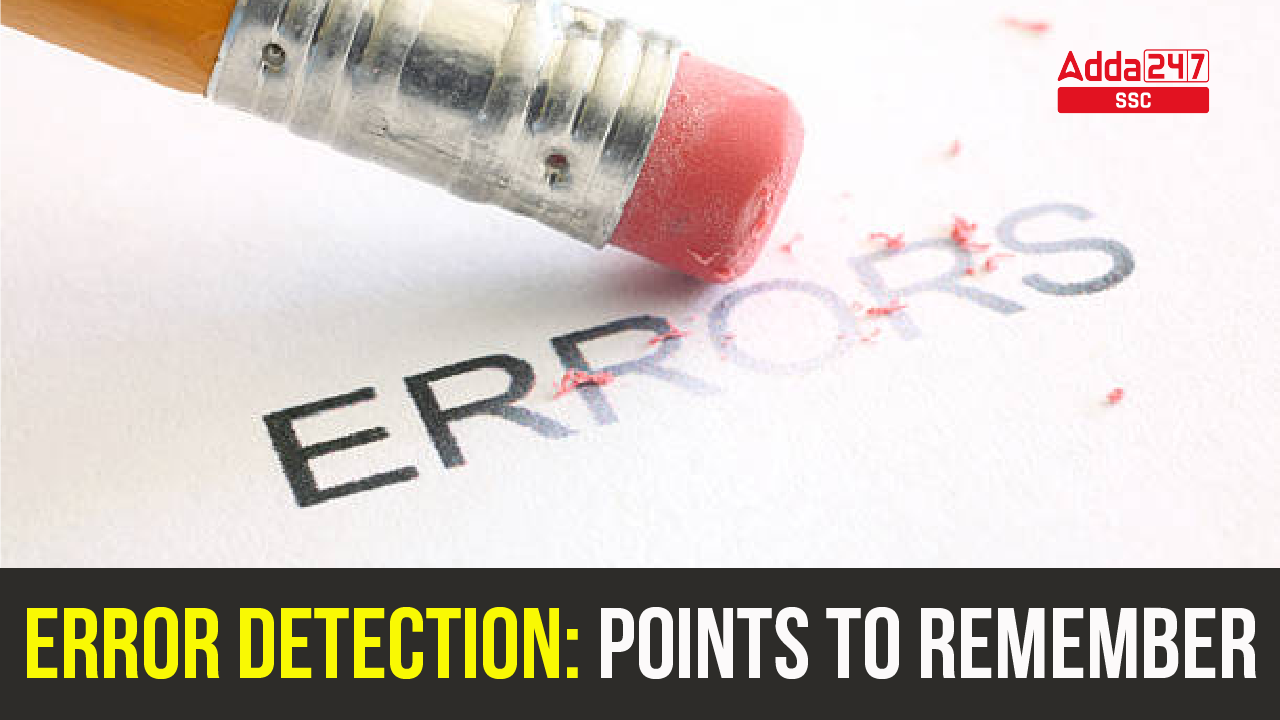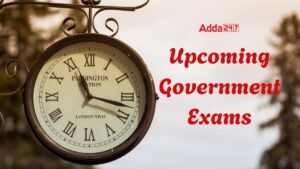The English Language section is an integral part of government exams, whether it’s SSC CGL, SSC CHSL, SSC MTS, SSC Stenographer, SSC CPO, or bank exams. One crucial sub-topic within this section is Error Detection, which often troubles a significant number of aspirants. Mastering Error Detection can significantly benefit you in other English Language topics, such as Sentence Improvement, Sentence Completion, and Cloze Test. Therefore, it is evident that practicing Error Detection is a valuable task for exam preparation.
However, many aspirants tend to either underestimate or overemphasize the importance of the English Language section. The key is to maintain a balanced approach to achieve command over this subject. By recognizing the significance of Error Detection and its impact on other English Language topics, aspirants can develop a comprehensive strategy to excel in the English Language section of their target exams. A balanced and focused approach to this section can give you a distinct advantage over your competitors.
Key Topics to Master Error Detection
1. Focus on Subject-verb Agreement: It is observed that almost 90% questions are framed from the subject-verb agreement. So this portion should be thoroughly gone through by the aspirants as this includes questions related to tenses, prepositions, verbs, nouns, and almost each and every part of grammar which we prepare for verbal. Thus, the rules and formulas of verbal should be learnt by-heart to make it as easy as possible.
2. Pay Attention to verb forms: Don’t forget to detect the correct form of verb used in the given sentence. Many questions are framed from this section. Verbs similar to spell or pronounce or which don’t exist but often given in a way to puzzle, are generally kept in order to create confusion. Thus, this section should not be ignored in order to avoid confusion. For example:
Then his eyes overflown with tears, and he fell on his knees before the king. ( ×)
Then his eyes overflowed with tears, and he fell on his knees before the king. (√)
3. Check for Conjunctions: The correct use of conjunction should always be checked as the two conjunctions can’t be used in the same sentence unless and until correct format is applied. For example: as….as; so….that….these are the correct combinations but as….so is incorrect.
4. Strengthen your Vocabulary: It is mandatory to work on vocabulary to maximize your score as many words come in the exams that may hinder your understanding. So it is obvious that to crack this section, one must have a good vocabulary.
5. Basic of Collective Nouns: Collective nouns shouldn’t be overlooked as this is one of the major sections of a sentence which contains errors. Singular and Plural forms should be kept in mind considering it to be one of the most important parts that defines the type of noun.
6. Understand Syntax Errors: This might be the trickiest aspect to understand and/or convey. If grammar is the basic structure, syntax is the nuanced juxtaposition of words and phrases.
For Example: “Not all birds are eagles,” is different from, “All birds are not eagles.” (The latter’s not quite true, is it?)
Practice Questions on Error Detection
Staying informed about the latest exam patterns and question formats is essential for candidates to achieve their desired scores. By updating their skills in identifying and correcting errors, aspirants can strengthen their overall performance in the English Language section of government exams.
In the questions provided, a part of the sentence may contain an error. Your task is to identify the erroneous part and select the appropriate option. If a sentence is free from any error, select ‘No Error’.
Q1. The taxes to be paid are still supposed to be calculated (A)/ by the authorities based on how much the sale price of a company’s (B)/ unlisted share exceeds than its fair market value. (C)/ No Error (D)
(a) A
(b) B
(c) C
(d) D
Ans. (c)
Sol. Exceed: be greater in number or size than (a quantity, number, or other measurable things). Hence the usage of ‘than’ after ‘exceed’ is superfluous and needs to be removed.
Q2. In October 1940, Gandhi, abandoning his original stand, decided to (A)/ launch limited civil disobedience campaign in which leading advocates (B)/of Indian independence were selected to participate one by one. (C)/ No Error (D)
(a) A
(b) B
(c) C
(d) D
Ans. (b)
Sol. Add indefinite determiner ‘a’ before the singular countable subject ‘limited civil disobedience campaign’.
Q3. I know I will be (a)/ compelled to leave this house (b)/ this week, which will be very disadvantageous for me. (c) / No error (d)
(a) A
(b) B
(c) C
(d) D
Ans. (a)
Sol. Replace ‘will’ with ‘shall’. Since shall is used with first person if it is followed by ‘be obliged’, ‘be compelled’.
Error Detection Question Solving Tips
When approaching error detection questions, it’s important to keep a few key points in mind:
- Don’t pause excessively at the slashes in the sentences. Instead, read through the sentences continuously to naturally identify any errors. Pausing too much can hinder your proficiency in spotting mistakes.
- Remember, the examiner is testing your aptitude, not just your grammar knowledge. Utilize the elimination method to find the answers, even if you don’t have in-depth grammar expertise.
- These are error detection questions, not error correction. Focus on identifying the part of the sentence that contains the error, rather than spending time analyzing the reason behind it.
- Don’t overlook spelling errors, as they can occasionally appear in exams, even though the emphasis is typically on grammatical mistakes. Being alert to both types of errors can save you valuable time.
By keeping these key points in mind, you can develop a more effective approach to tackling error detection questions in the English Language section of government exams. This will help you score well and showcase your aptitude in this crucial part of the exam.





 Upcoming Government Exams, Complete Govt...
Upcoming Government Exams, Complete Govt...
 Govt Jobs 2025, Latest Upcoming Governme...
Govt Jobs 2025, Latest Upcoming Governme...
 SSC Exam Calendar 2025–26 Out, Check All...
SSC Exam Calendar 2025–26 Out, Check All...









